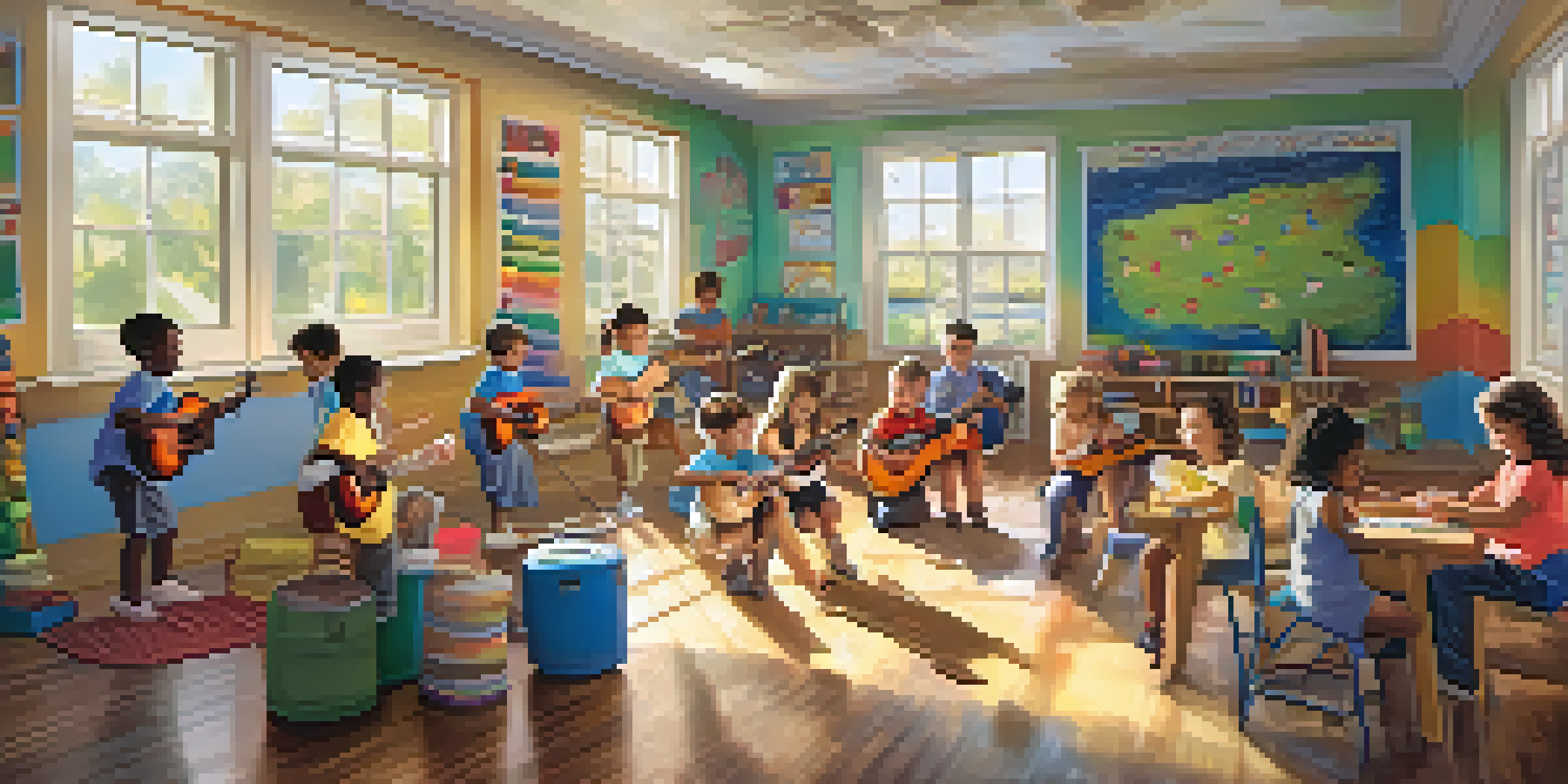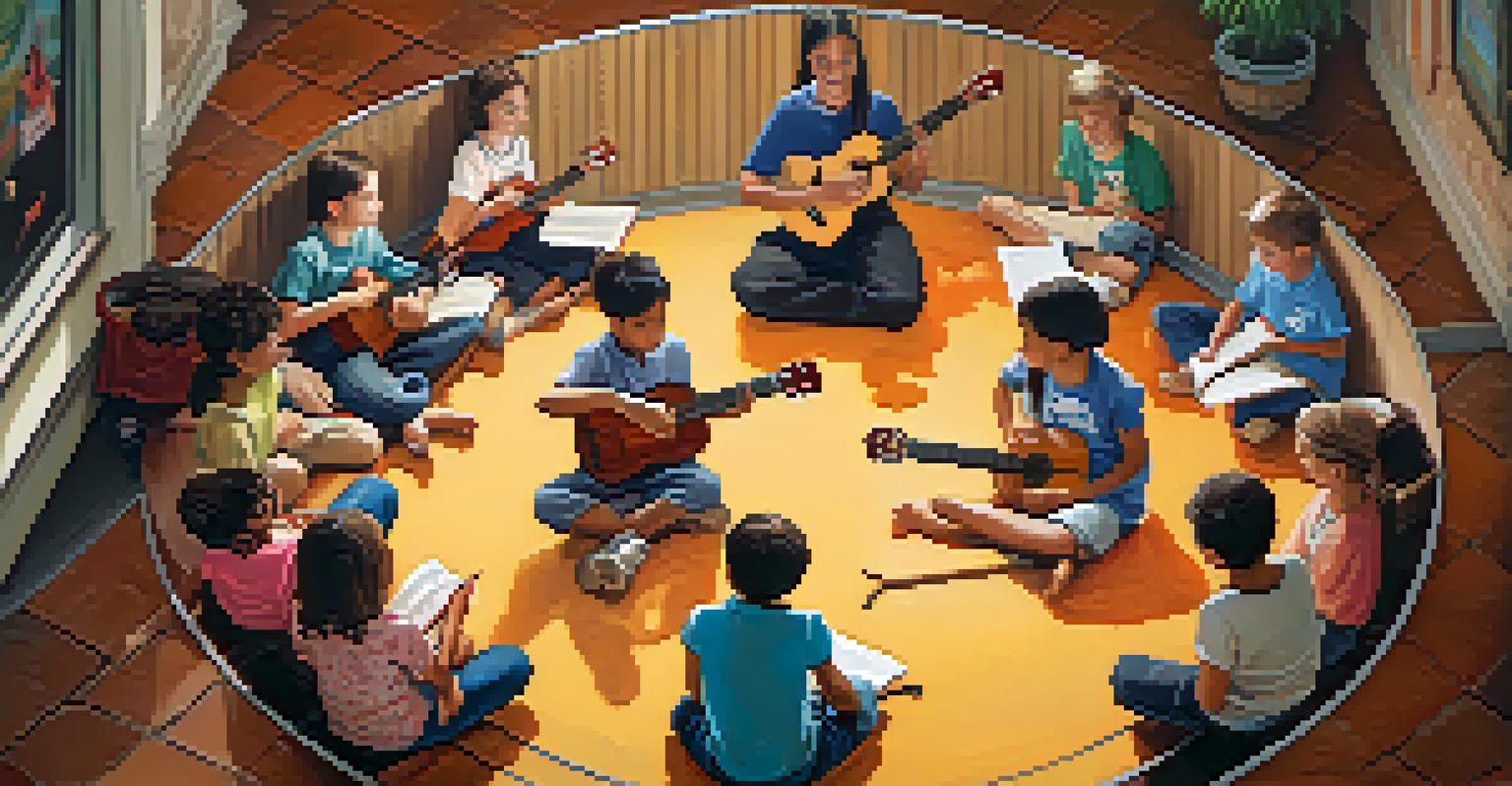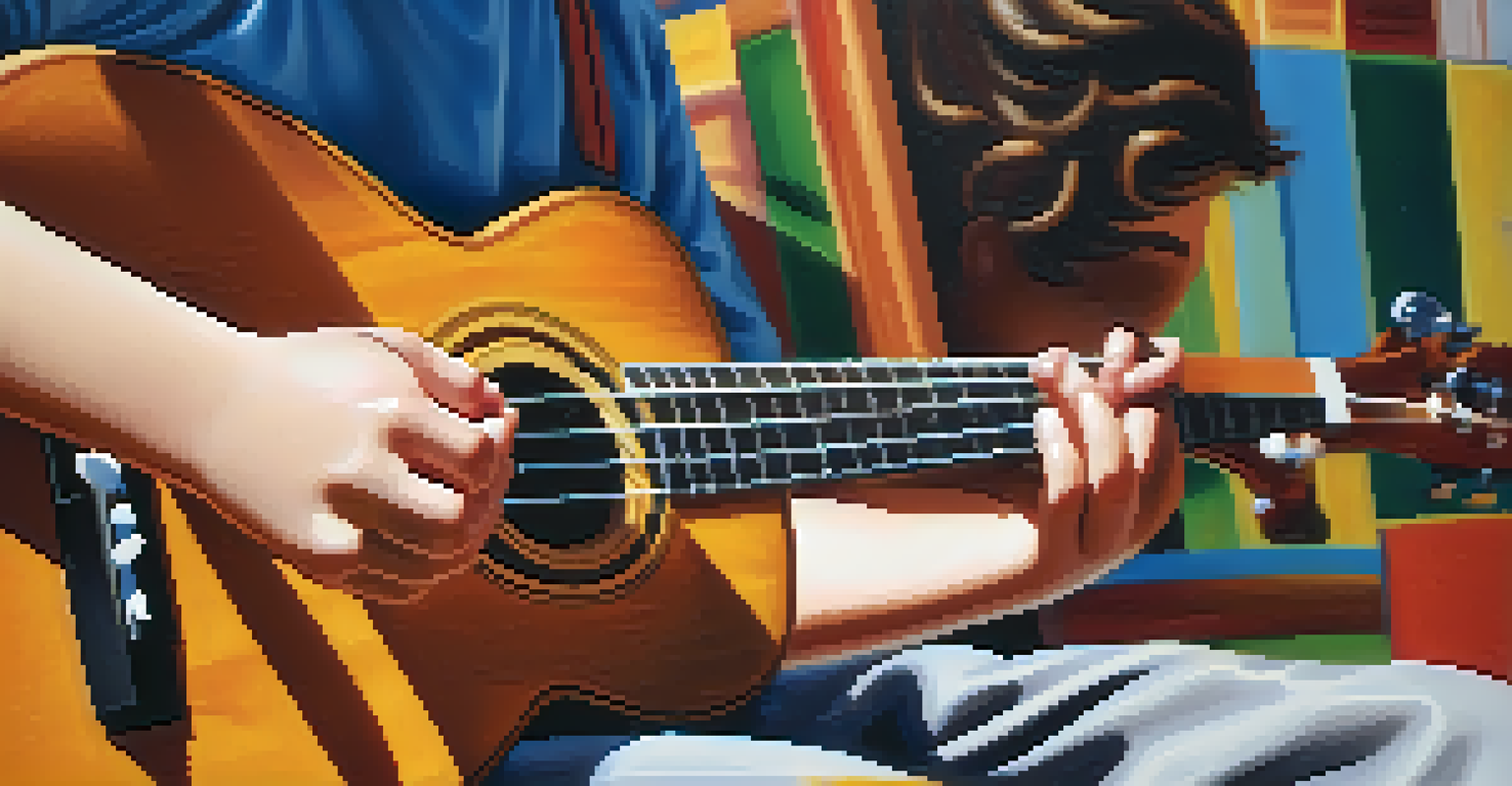Incorporating Ukuleles in Elementary Music Education Classes

The Benefits of Using Ukuleles in Music Education
Ukuleles are not just fun instruments; they also offer numerous educational benefits. Their small size and lightweight design make them perfect for young learners, allowing kids to easily hold and play them. Additionally, the ukulele’s four strings are much simpler than a guitar’s six, making it easier for beginners to grasp the basics of music.
Music education opens doors that help children pass from school into the world around them—a world of work, culture, community, and family.
Incorporating ukuleles into music classes can enhance students’ engagement and motivation. When children see their peers strumming and singing along, it creates a sense of community and excitement around music learning. This collective experience fosters collaboration, with students often learning from one another during group activities.
Moreover, playing the ukulele can improve fine motor skills and hand-eye coordination. As students practice finger placements and strumming patterns, they develop dexterity that can benefit them in various aspects of their education, not just in music. This holistic approach to learning is what makes the ukulele a fantastic addition to any elementary music program.
Getting Started: Essential Ukulele Skills for Beginners
Before diving into song practice, it’s important to establish a strong foundation of basic skills. Start with simple chords like C, G, and F, which can form the basis of many popular songs. Teaching these chords in a fun, game-like manner can keep students engaged and eager to learn more.

Encourage students to practice strumming patterns, which are just as important as the chords themselves. Simple downstrokes and upstrokes can help them develop a sense of rhythm. You might relate this to clapping along to a beat, making the connection to rhythm in a way that’s easy to grasp.
Engaging Learning with Ukuleles
Ukuleles enhance student motivation and collaboration in music education through their fun and accessible nature.
As students become more comfortable with these basic skills, introduce them to more complex chords and techniques like fingerpicking or barre chords. Progressing at a comfortable pace ensures that students remain excited about their musical journey. Building confidence through achievable goals is key to maintaining their interest.
Creative Song Selection for Ukulele Classes
One of the most exciting aspects of incorporating ukuleles is the plethora of songs available to play. Selecting songs that resonate with students can significantly enhance their learning experience. Consider using popular songs that they already know and love, which can spark enthusiasm and a desire to participate.
Education is not the filling of a pail, but the lighting of a fire.
You might also want to include traditional songs or folk tunes, as these can introduce students to various musical styles. This not only broadens their musical horizons but also connects them to cultural heritage. Additionally, incorporating songs in different languages can be a fun way to explore diversity in music.
Lastly, consider allowing students to suggest songs they want to learn. This empowers them and makes them feel more invested in their musical education. When students have a say in their learning, they are more likely to engage fully with the material.
Integrating Ukulele with Other Subjects
The ukulele can serve as a fantastic tool for interdisciplinary learning. For instance, you can integrate music with language arts by having students write lyrics to their own songs. This not only reinforces their songwriting skills but also enhances their understanding of language and expression.
Additionally, you can incorporate ukulele lessons into math classes by exploring musical rhythms and counting beats. This connection helps students see the relevance of math in everyday life, making the subject more engaging. Using a ukulele to illustrate these concepts can turn abstract ideas into tangible learning experiences.
Integration Across Subjects
The ukulele can connect music education with other subjects like language arts, math, and science, fostering a holistic learning experience.
Science classes can also benefit; you can discuss sound waves and vibrations while playing the ukulele. This holistic approach to learning promotes critical thinking and creativity, showing students that music is not just an art form but a science as well.
Creating a Supportive Ukulele Classroom Environment
A supportive classroom environment is crucial for fostering musical growth. Establishing ground rules that promote respect and encouragement can help create a safe space for students to express themselves. When students feel valued and respected, they are more likely to participate actively in lessons.
Consider using group activities, such as ensemble performances, to build camaraderie among students. These collaborative experiences can enhance teamwork skills while promoting a sense of belonging. When kids work together to create music, they develop social skills that will serve them well beyond the classroom.
Additionally, celebrating students’ progress, no matter how small, can boost their confidence. Regularly showcasing their achievements through class performances or informal jam sessions can motivate them to continue learning. This positive reinforcement plays a key role in their overall enjoyment of music education.
Using Technology to Enhance Ukulele Learning
In today’s digital age, technology can play a significant role in music education. There are numerous apps and online resources that provide ukulele tutorials, chord charts, and play-along tracks. Integrating these tools into your lessons can make learning more accessible and engaging for students.
You might also consider using video conferencing for virtual lessons, allowing students to connect with others beyond their classroom. Collaborating with other schools or music programs can expose them to different teaching styles and musical influences. This not only enriches their learning experience but also builds a sense of community.
Creating a Supportive Environment
A positive classroom atmosphere that encourages respect and celebrates progress is essential for effective ukulele learning.
Finally, encourage students to record their practice sessions or performances. This not only helps them track their progress but also allows them to share their musical journey with family and friends. The act of recording can provide a sense of accomplishment and motivate them to keep improving.
Assessing Progress in Ukulele Education
Assessing student progress in a ukulele program can be both rewarding and challenging. It’s important to establish clear objectives and criteria for assessment to ensure that students understand what is expected of them. Using both formal and informal assessments can give a comprehensive picture of their growth.
Consider using performance assessments, where students demonstrate their skills in front of their peers. This not only encourages accountability but also helps to build their confidence. Pairing performances with self-reflections can prompt students to think critically about their own progress.

Lastly, keep communication open with students and parents about their development. Providing regular feedback helps students understand where they excel and where they may need additional support. This collaborative approach fosters a positive learning environment and encourages ongoing growth.